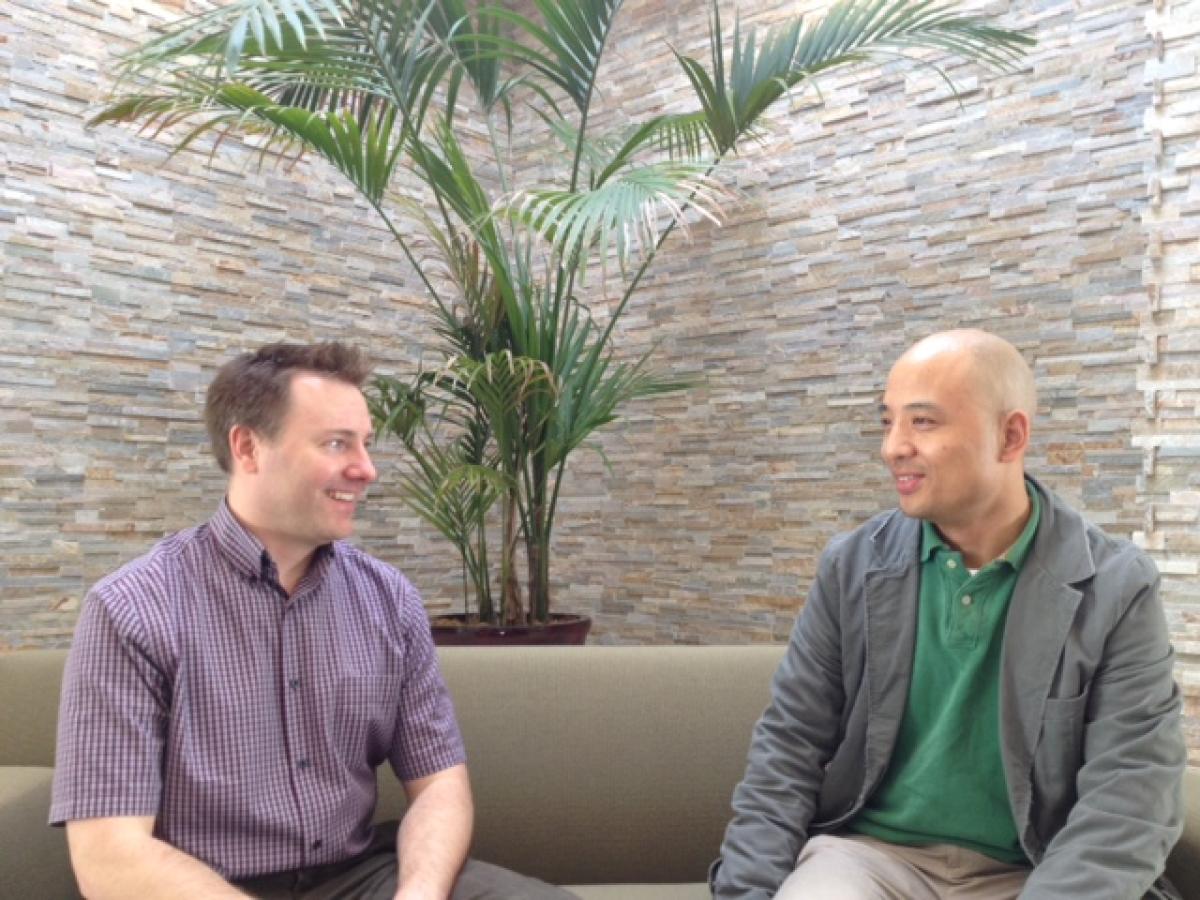In my role as an Applications Scientist here at Picarro, I’m always getting questions from customers like, “So what’s new?” and “What new technology breakthroughs are you guys working on?” To better address these questions, I spoke with Picarro Senior System Engineer Dr. Yonggang He about the recent technology innovations that have enabled us to boost the performance of our isotopic carbon analyzers. Here’s a bit of our discussion:
Aaron Van Pelt (AVP): We’ve made two different changes to our optical train to improve the performance of these analyzers. Would you elaborate on these improvements?
Yonggang He (YH): This performance breakthrough is the result of two patent-pending innovations building upon Picarro’s cavity ring-down spectroscopy technology. CRDS technology is based on a measurement of the amount of time it takes for light to flow out, or ring down, from a cavity that is holding a gas sample. The key to improving the performance of CRDS is keeping the light within the cavity longer. The G2131-i quantifies the amount of light lost through scattering, a highly variable process. Quantifying the light scattering permits the reduction of measurement variability. The second innovation improves the ability of the analysis cavity to contain light, which strengthens the measurement signal. This combination of less variability and stronger signal makes the isotope ratio measurement more precise.
AVP: So with these optical tricks in place - it’s all smoke and mirrors, right?! How has this changed the analyzers’ performance?
YH: Funny guy! Anyway, this new carbon isotope analyzer has three times the precision and four times the stability of our earlier isotopic CO2 instruments – with a precision specification of 0.1 per mil for 13C/12C ratio measurements in CO2 in a five minute measurement and with 0.5 per mil or less drift over 24 hours.
AVP: What was the biggest obstacle to overcome in this development?
YH: As with making any product, working with your suppliers is important, and where complex, multi-component optical systems are concerned, this is critical to squeezing out that last bit of performance. We knew what we needed, optically, to improve the performance and worked in close partnership with our key optical component suppliers to help them understand exactly what specifications they needed to hit for us to achieve our performance goals. It’s not as simple as just ordering components off the shelf – multiple rounds of iterative design changes by suppliers and careful performance evaluation by us, spanning many months, was required to get where we are with the components.
AVP: So can these optics enhancements be used to improve analyzers other than the isotopic carbon systems they’ve been used on so far?
YH: Well, for different applications and for different molecules with different spectroscopic challenges, you can’t always use the same tricks and come out with such large gains in performance. Yes, these enhancements can, generally speaking, be applied to other analyzers, but the degree to which they will improve the performance again depends on the specifics of what is being measured and how.
AVP: With these new optical developments, it sounds like there are increasingly more knobs you can tweak to make performance gains or to make new instruments for new molecules.
YH: It’s an exciting time to be developing optical instruments, for sure! If there weren’t so many more things to work on to continuously expand into different applications and keep making performance gains, we R&D guys would be out of a job!
